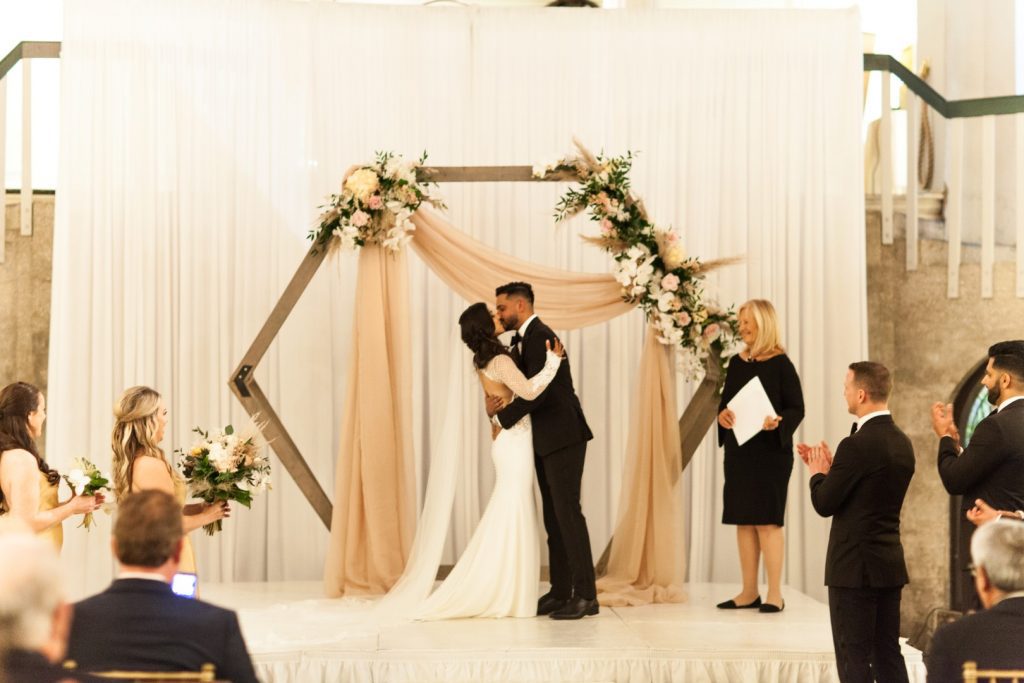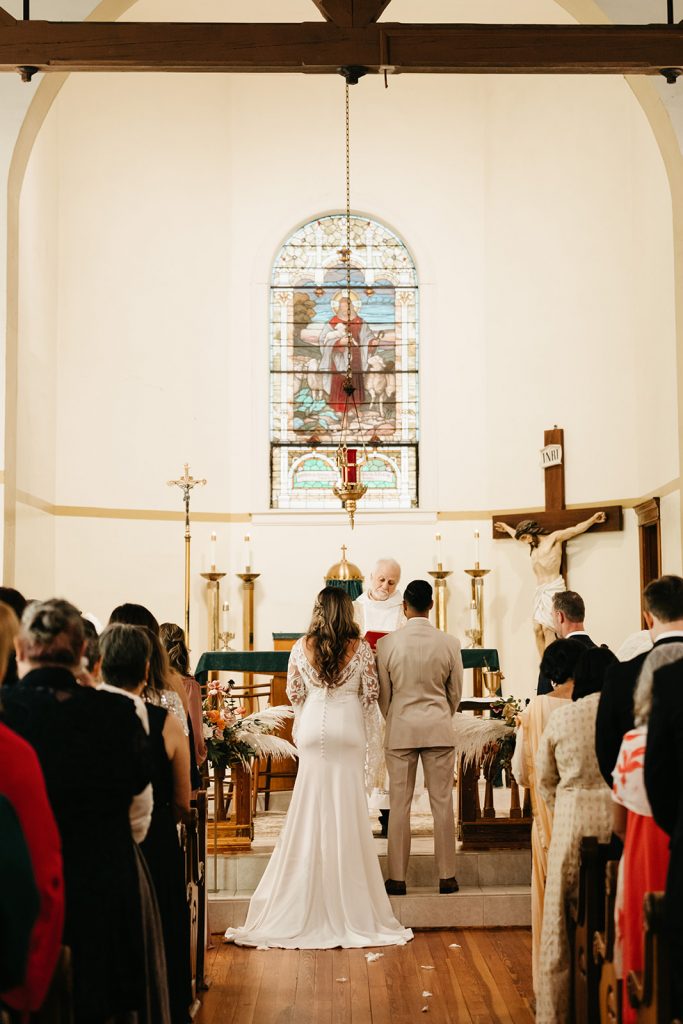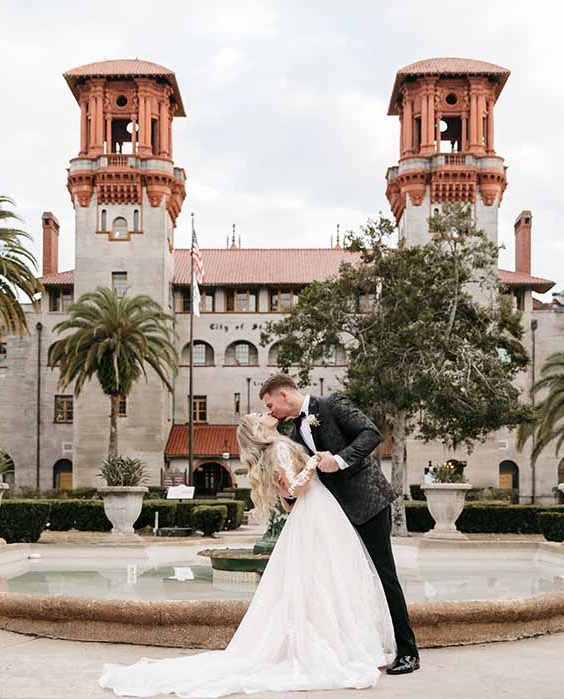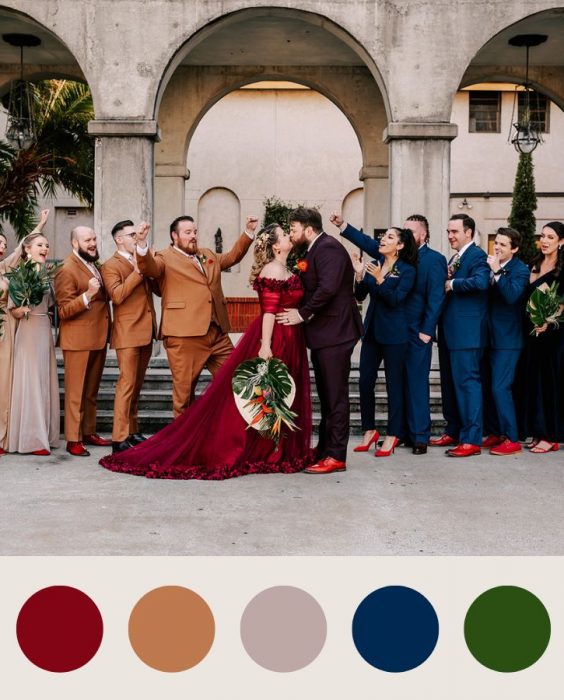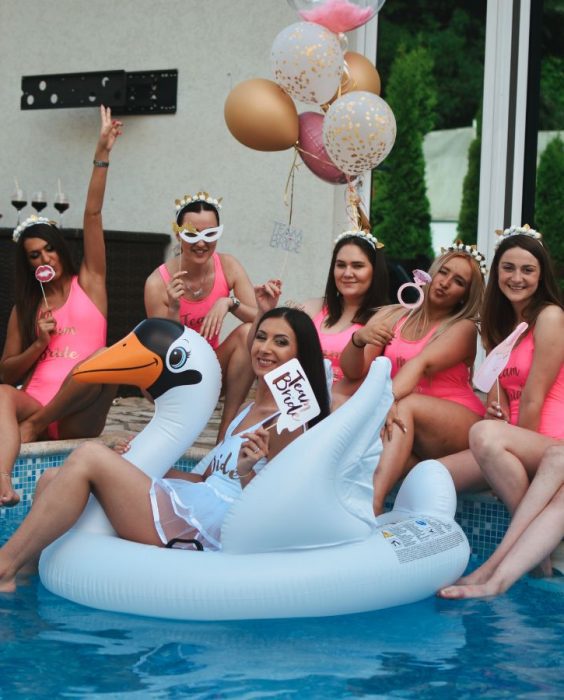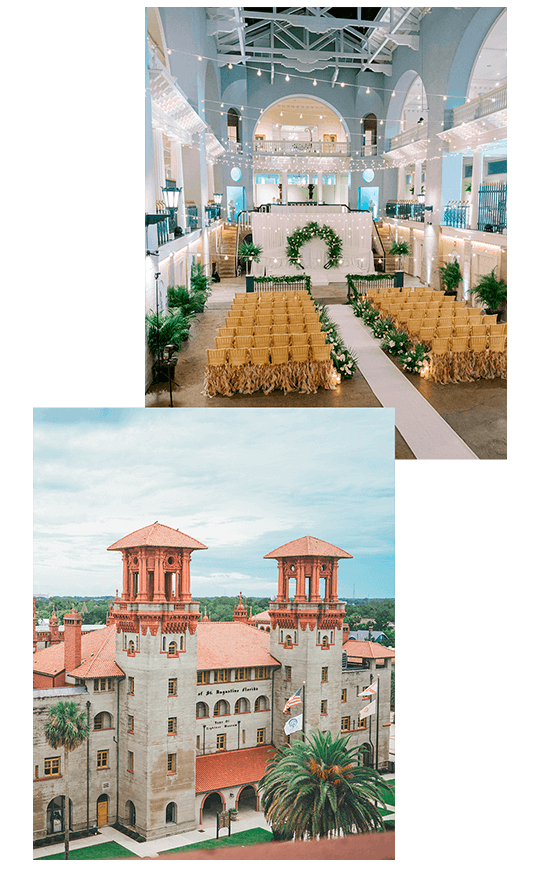If you grew up in a particular faith tradition, you likely had a very clear idea of what your wedding ceremony would look like. However, if your spouse-to-be comes from a different religious background, you’re probably presented with a unique challenge when wedding planning begins: how to plan a mixed-faith wedding ceremony.
Interfaith weddings are more than a compromise between two families; they’re a beautiful way to honor two cultures united by love.
By borrowing traditions and values from each of your backgrounds, the two of you can choose what your faith means to you on a personal level, and find ways to share those beliefs in a unique way. In this article, we’ll share our top interfaith wedding tips for planning a ceremony that honors and celebrates the two of you.
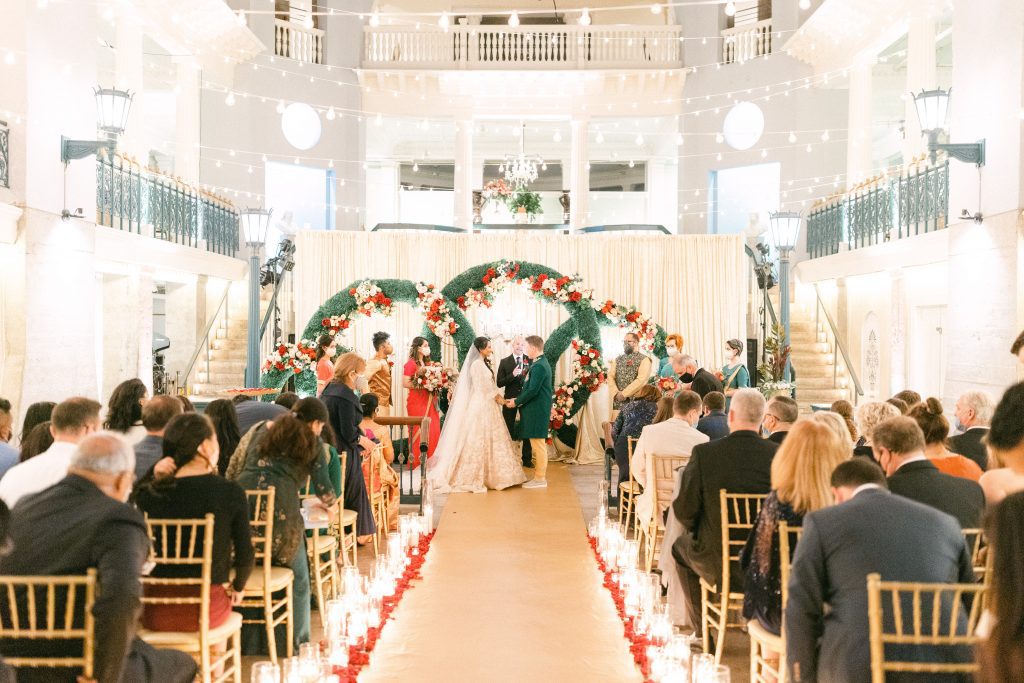
Linda and Matt’s wedding was the perfect fusion of two cultures and faiths. | Photo courtesy of Nate Puhr Photography
Take Time To Discuss Your Values
This is the time not to just plan an interfaith wedding, but to prepare for how faith and traditions will play a part in your marriage.
Take some time to discuss your expectations for the future with your partner. How will you celebrate holidays? How will you raise your children, if you choose to have them? To what extent will your faith affect your daily life?
You may want to consider premarital counseling, which allows you to work through these questions with a religious or non-religious mediator.
These important conversations will give you both an idea of the role that faith plays in your lives. With this in mind, you can start to shape how your wedding ceremony might be a reflection of your combined values.
You may decide that the best option is to have a secular wedding ceremony with new traditions of your own. Remember, this is personal to each couple; there are no right or wrong answers here!
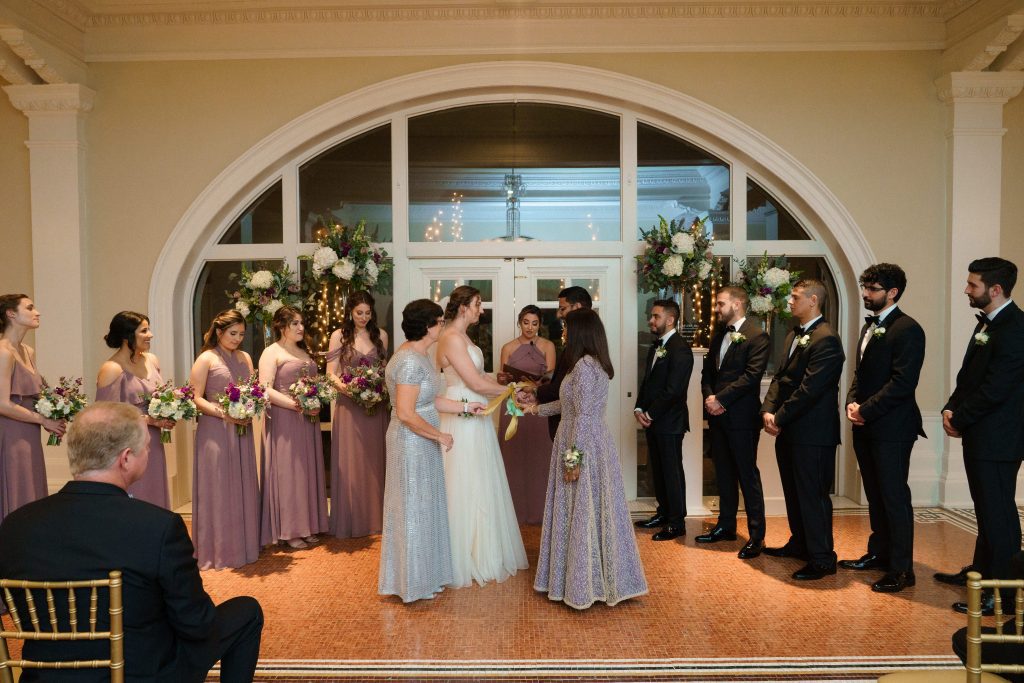
Falon and Raza performed a handfasting to symbolize binding their two lives and families together. Handfastings have become a popular ritual in both religious and secular ceremonies. | Photo courtesy of Rob Futrell
Find a Way to Honor Both Families
Even if neither of you are particularly observant, marrying outside of your faith can sometimes come with a lot of questions or input from your families.
Remember to be patient with parents, grandparents, and other family members. To keep the peace, maintain a respectful dialogue with everyone involved. Discuss what traditions are important for each of you, keep an open mind, and try to compromise whenever possible. If you choose to have religious celebrations, try to make sure both of your faiths are equally represented.
At the end of the day, this is your day…but your wedding sets a precedent for your relationships with your families moving forward. No one wants to start their marriage with hurt feelings among loved ones or family feuds that continue for years. Choose the traditions that mean the most to you, but be respectful of other people’s feelings. Some of your family members may have been dreaming of this day as long–if not longer–than you have.
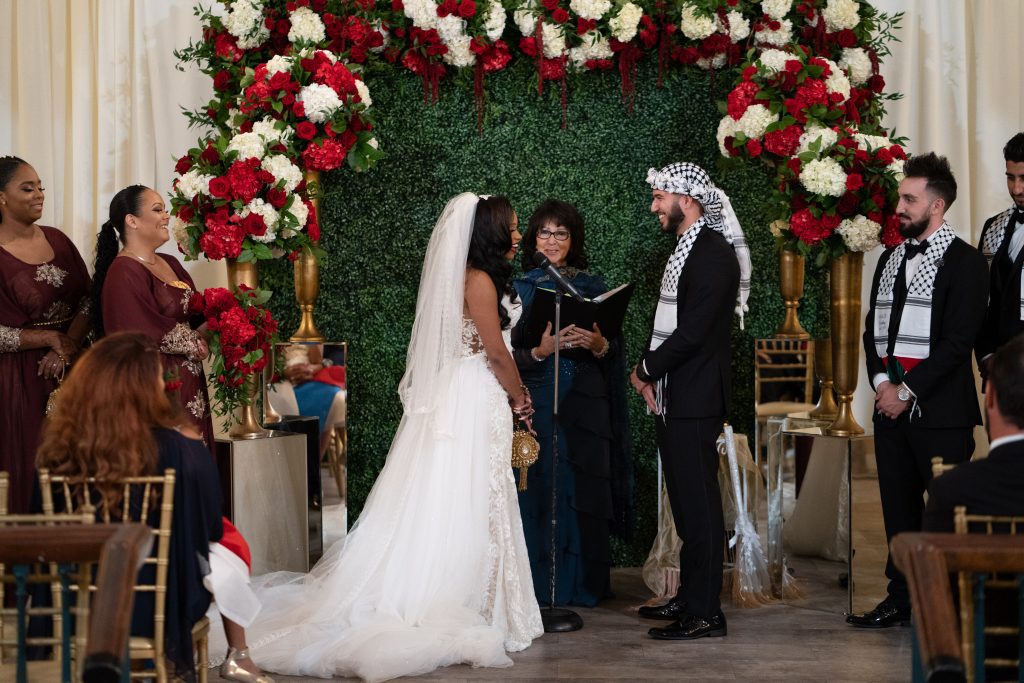
Melodiana and Belal are Panamanian and Palestinian, respectively. Their wedding ceremony and reception incorporated both their religious and cultural backgrounds. | Photo courtesy of Rob Futrell
Pick a Neutral Wedding Venue or Plan Multiple Celebrations
If your goal is to celebrate with equal representation for your religious faiths, you may want to avoid hosting your wedding ceremony in a house of worship. One of our best interfaith wedding tips is to choose a neutral venue for the wedding ceremony.
An event space such as the Lightner Museum is ideal for interfaith weddings. It is a blank canvas that can be customized to fit almost any faith or non-faith-based celebration. Our Historic Pool, with its three-story ceiling, has a grandeur that can’t be matched. It’s truly one of a kind!
Some couples choose to plan two separate ceremonies to represent each of their faiths equally, while other couples may have one religious and one nonreligious ceremony. We’ve hosted several weddings that are just one part of a two-day or three-day wedding celebration. Who wouldn’t love a reason to have a multi-day party to kick off their union?
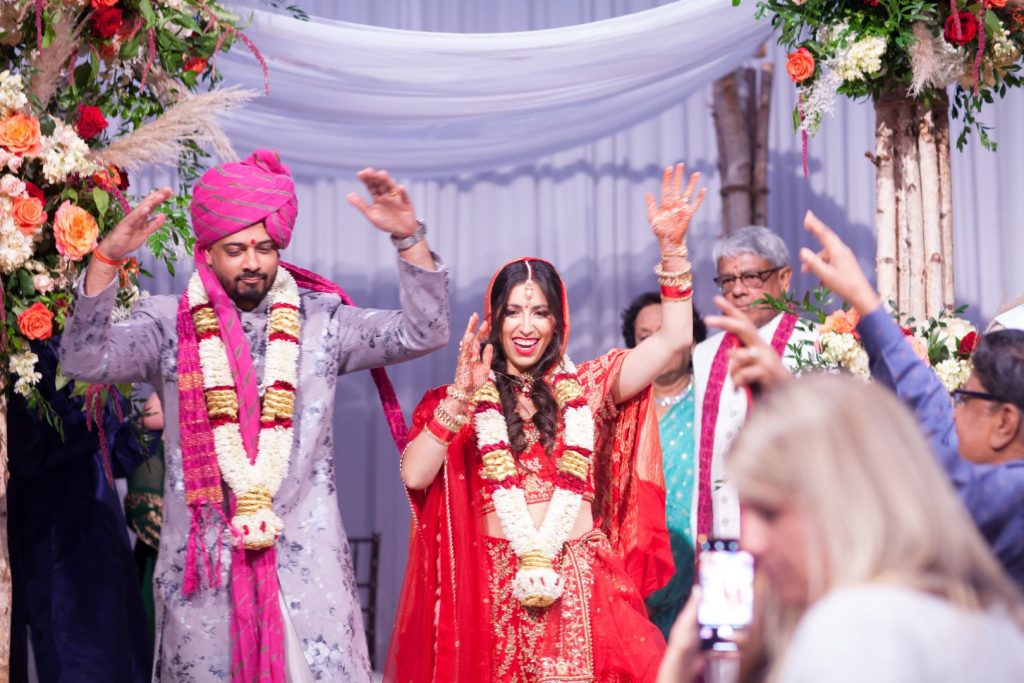
Alyssa and Shan held a secular wedding at the Lightner Museum and a traditional Hindu wedding the following day at our sister property, The Treasury on the Plaza. | Photo courtesy of Andi Mans Photography
Choose Your Officiant (Or Officiants)
Your officiant (or officiants) will play a major role in your wedding ceremony.
If you’re already a member of a church, temple, mosque, or another place of worship, you may have an officiant in mind. Speak to them well in advance to understand what your options are for having them officiate your wedding. Some religious leaders may not be able to officiate your wedding if the ceremony is not held in their house of worship.
There are many officiants who specialize in interfaith or customized wedding ceremonies. These officiants will work with you to customize your ceremony to honor both of your faiths.
If you are pulling from two different faiths, you may want to have official representatives of both of those religions at a combined wedding ceremony, or you can plan two separate ceremonies. If so, this will mean coordinating with two different officiants.
In addition, some officiants may require that you attend marriage counseling before the wedding. If both officiants require this, you may need extra time to comply.
If you have two officiants that will be blending two wedding ceremonies into one, make sure that they are able to coordinate with each other on the planning and timeline of the ceremony. (This is where a wedding planner can also come in handy!)
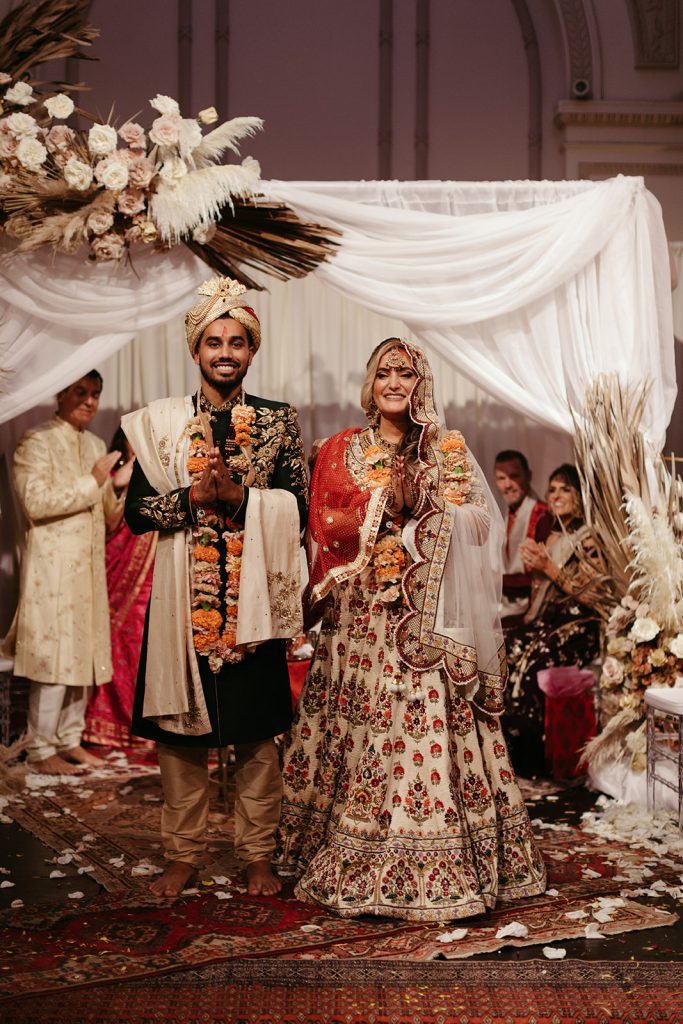
Alejandra and Rishi chose to hold two separate wedding ceremonies to represent each of their faiths equally. | Photo courtesy of We Are the Bowsers
Explain Traditions to Your Guests
There may be aspects of your religion or your fiancé’s religion that will be unfamiliar to your guests. Make sure you have a way to communicate and educate attendees on what is happening during the wedding ceremony.
Use your wedding website, programs, or your officiant to explain wedding traditions to the guests who might not be familiar with them. This not only helps open the doors of diversity, but it also helps everyone get to know each other.
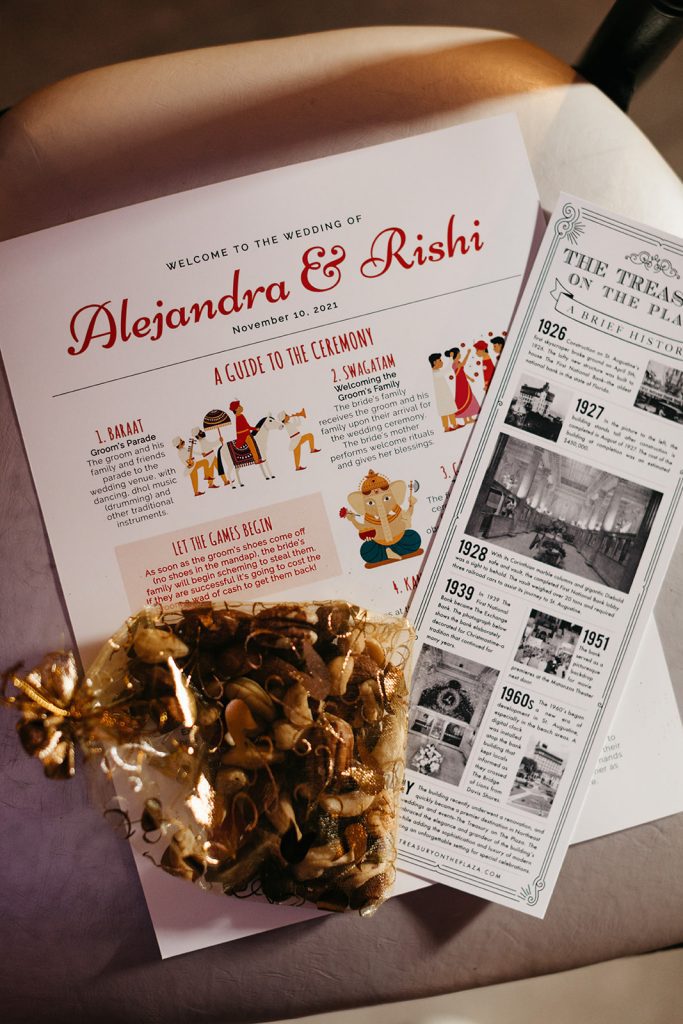
Alejandra and Rishi created a “Guide to the Ceremony” that explained all of the traditions and rituals that made up their Hindu wedding ceremony. | Photo courtesy of We Are the Bowsers
Combine Cultures Through Wedding Symbols and Traditions
Many cultures and religions around the globe have traditions and symbols that make up the wedding ceremony. You can either find ways to blend traditions or trade religious rituals throughout the ceremony.
For example, in Muslim ceremonies, some sects shower the bride and groom with coins at the end of the ceremony ritual to wish them luck. Indian weddings often include an exchange of garlands to symbolize the couple welcoming their partner into their family. Lighting candles is an important ritual in the Greek Orthodox wedding to represent purity and the way that God will light the way for the couple.
When possible, look for opportunities to blend traditions together in your own unique way. For example, both Jewish and Hindi couples traditionally say their vows under a wedding canopy, known as the Jewish chuppah and Indian Mandap. This could be the perfect setting for a fusion wedding.
Consider adding a unity ceremony to your wedding to symbolize the two of you coming together. Lighting a unity candle, handfasting, or even mixing your first margarita are great options!
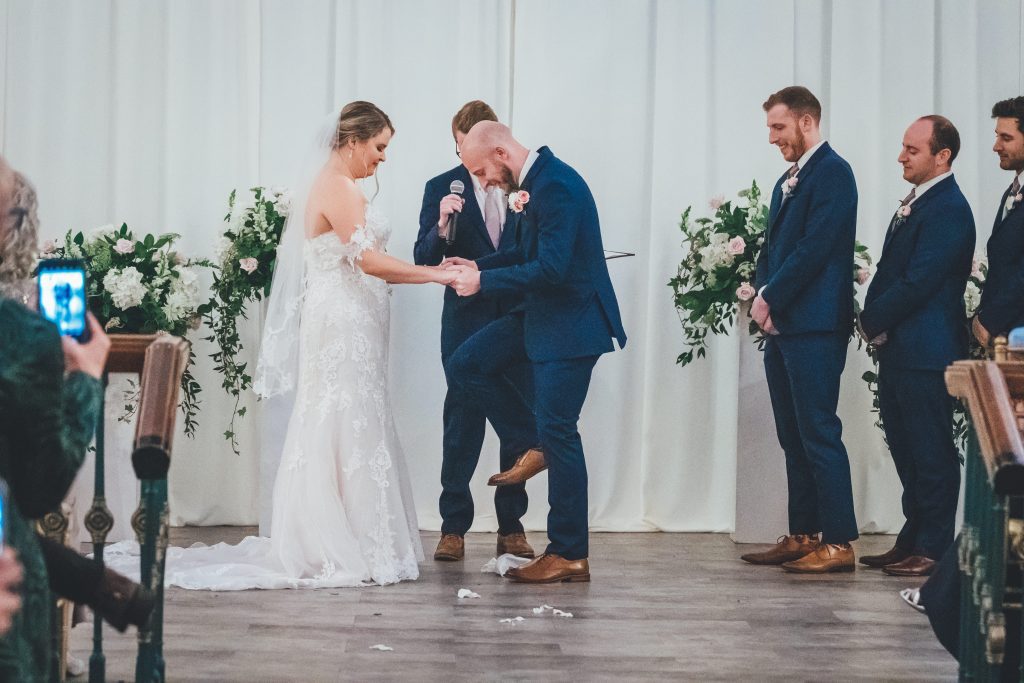
Ilona and Max completed their wedding ceremony by stomping on glass. The breaking of the glass holds multiple meanings in Judaism. Some say it represents the destruction of the Temple in Jerusalem. Others say it demonstrates that marriage holds sorrow as well as joy and is a representation of the commitment to stand by one another even in hard times. | Photo courtesy of Bow Tie Photo & Video
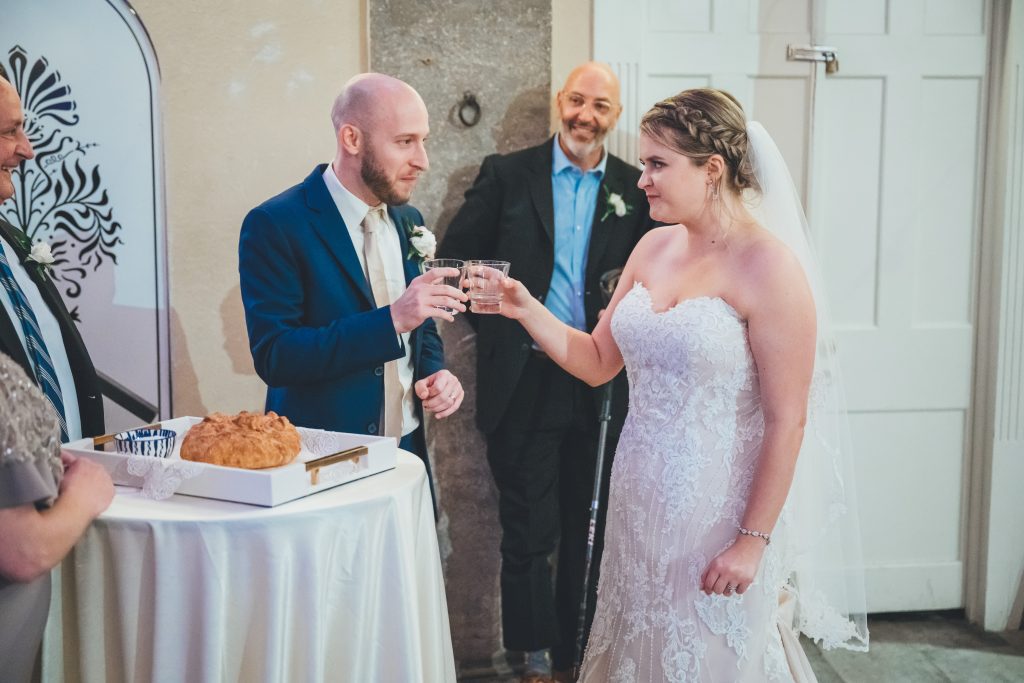
Ilona and Max also incorporated a cultural tradition from Poland. In this ritual, the father of the bride or groom provides the happy couple with two shot glasses. One has Vodka, one has water. This is considered the couple’s first wedding toast. The bride and groom drink the glasses in one gulp. Welcoming with Bread and Salt is also tradition for greeting important guests in Poland.
Ask the Experts!
Your wedding coordinator and venue team have often overseen hundreds of weddings, including plenty of interfaith ceremonies. They can often share ideas and inspiration on how to honor your faith.
Asking for their best interfaith wedding tips will ensure that you get the most out of your wedding venue and vendors.
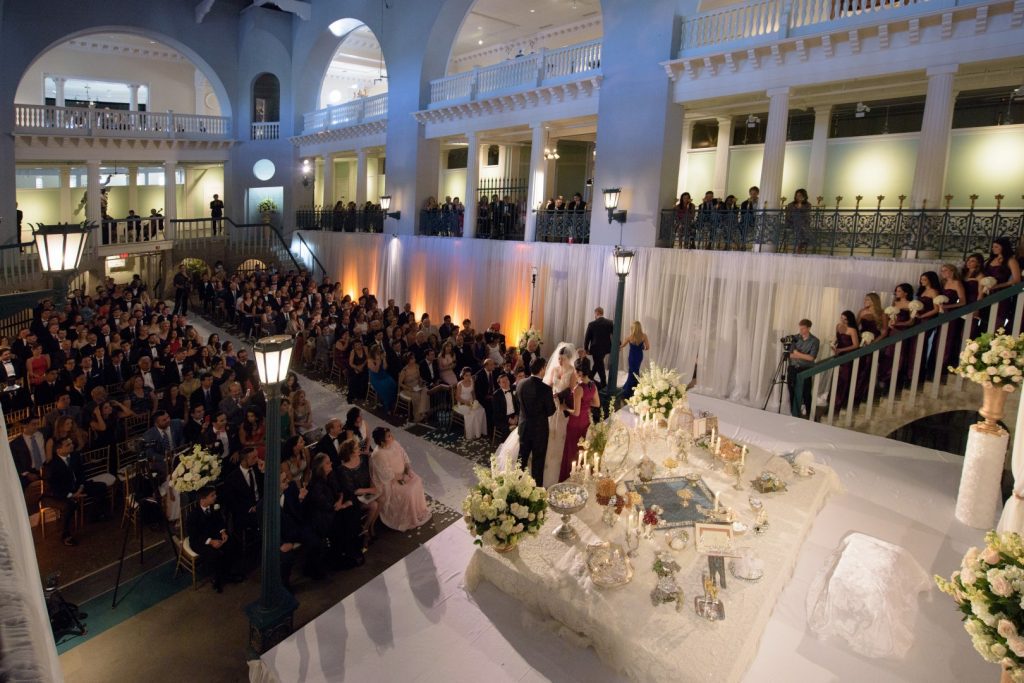
David and Neda’s wedding ceremony at the Lightner Museum. | Photo courtesy of Monarch Studio
Tie the Knot at the Lightner Museum
Every couple deserves to have the wedding of their dreams, no matter their religious beliefs or cultural background! At the Lightner Museum, we’re dedicated to making your vision for your big day come true.
We hope these interfaith wedding tips have given you plenty of ideas on how to blend your lives together, starting with your wedding ceremony.
For more information, schedule a venue tour or phone call with one of our venue experts. We can’t wait to hear from you!

